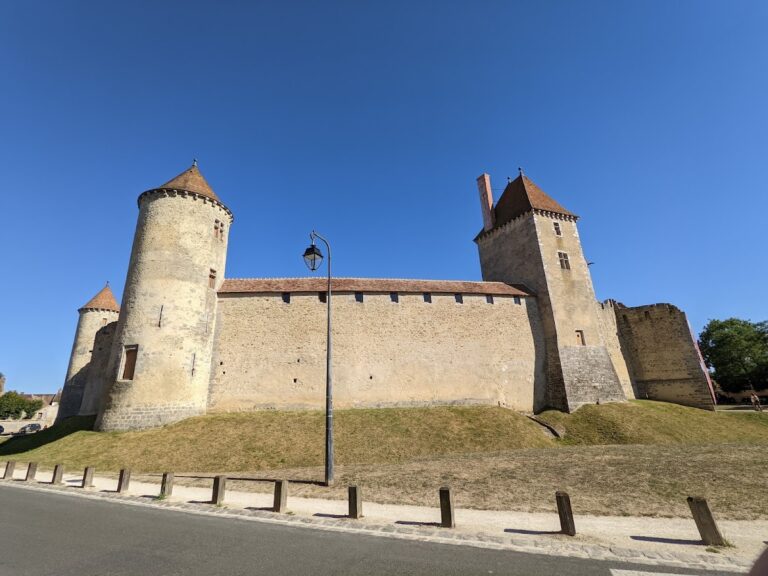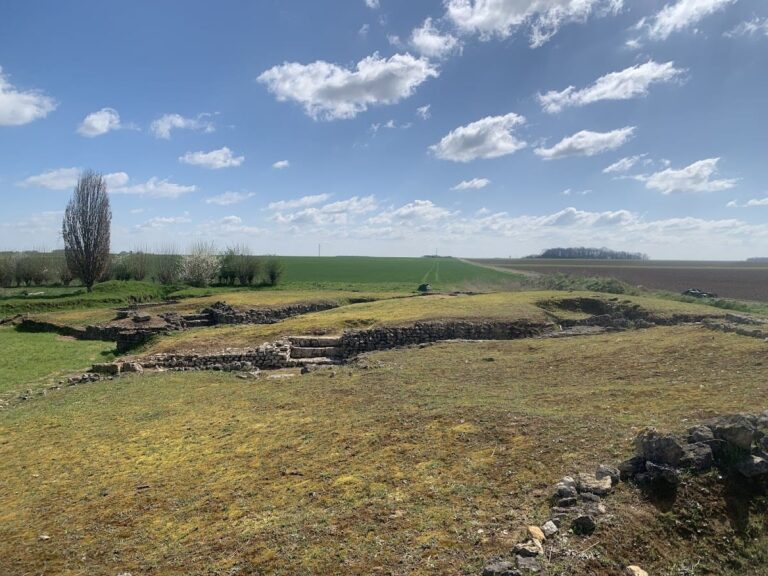Château Royal du Vivier: A Medieval and Royal Estate in Fontenay-Trésigny, France
Visitor Information
Google Rating: 4.7
Popularity: Low
Google Maps: View on Google Maps
Official Website: www.chateauduvivier.com
Country: France
Civilization: Unclassified
Remains: Military
History
The Château Royal du Vivier is a historic site situated in Fontenay-Trésigny, France, constructed during the medieval period by the French nobility. The estate originally formed part of the seigneurie of Tournan-en-Brie, owned by the Garlande family in the 13th century.
In May 1293, Jean II de Garlande sold the land to Pierre de Chambly, chamberlain to King Philippe IV, who quickly transferred it to Charles de Valois, the king’s brother. Charles de Valois expanded the domain by acquiring neighboring lands, many granted by King Philippe IV himself. A fortified residence, described as a “hôtel seigneurial,” already stood on the grounds in 1260, but Charles de Valois is credited with raising the castle’s walls. Around 1308, the royal artist Évrard d’Orléans adorned the castle’s halls and galleries.
The castle served as a royal residence for several French monarchs. King Philippe IV stayed there, and his son Philippe V spent time at the château as well, signing important ordinances at the site between 1319 and 1320. Later, King Charles VI was held there during periods of mental illness beginning in 1392. The castle’s role as a royal stronghold was further emphasized through ties to the church: in 1316, Pope John XXII authorized a chapel dedicated to Saint Thomas Becket, followed by another chapel honoring Saint Louis under King Philippe VI in 1336. The estate hosted notable events such as the marriage in 1352 of Jeanne de France to Charles the Bad of Navarre, coinciding with the elevation of the chapel to a collegiate church.
In 1368, King Charles V enhanced the religious status of the castle by placing a relic of the True Cross in the collegiate chapel, promoting it to the rank of a Sainte-Chapelle, a type of royal chapel meant to house important relics. Around this time, the castle’s gate tower was constructed and is understood to predate similar fortifications at the Château de Vincennes.
Following the death of Charles VI, the castle experienced decline and was abandoned during portions of the Hundred Years’ War. It was restored in 1391, and King Louis XI transferred nearby pond and mill rights to the canons of the Sainte-Chapelle in 1471. The castle remained a royal possession but lost its prominence over time. Notably, King François I stayed there in 1546 but was accommodated with the canons due to the poor state of the royal lodging.
By the late 17th century, descriptions reveal that the Sainte-Chapelle had fallen into disrepair, and the castle stood largely in ruins. In this period, Louis XIV reduced the chapel’s ecclesiastical independence by subordinating it to the Sainte-Chapelle of Vincennes. Later, in 1734, Louis XV ordered the suppression of the chapel altogether.
The French Revolution brought significant changes. In 1791, the property was sold as national property and converted for agricultural use. The castle became a farm building, the chapel was repurposed as a hay barn, and many stones from the ruins were sold locally. In the 19th century, specifically 1830, Jean-Baptiste-Nicolas Parquin acquired the estate, constructed the current château on the old foundations, and established an English-style landscaped park around it. The estate subsequently passed through various owners, including Raymond Sabatier and the Vicomte de Perthuis, before being acquired by industrialist M. Cousin in 1958, who undertook extensive restoration efforts.
Since 1988, the site has been used for hosting events and film productions. The remains and surrounding grounds were officially recognized as a Monument historique in 1996, re-establishing their protected status after earlier recognition had lapsed.
Remains
The original Château du Vivier was a medieval fortress featuring a collection of defensive and religious structures arranged within a well-defined precinct. Most of the surviving medieval features exist today in a ruinous state, offering glimpses of the castle’s former complexity.
One of the most significant components is the gate tower, likely built around 1368 during the reign of King Charles V. This tower was constructed as a strong defensive entrance and is notable for its early date, preceding the famous towers of the Château de Vincennes. The masonry exhibits the characteristic construction techniques of the period, with thick stone walls designed to withstand attack. Today, only fragments of this tower remain standing.
The castle included two chapels that highlight its spiritual importance. The first chapel was dedicated to Saint Thomas Becket, established following papal permission in 1316. In 1336, a second chapel honoring Saint Louis was added. Upon the marriage of Jeanne de France and Charles the Bad in 1352, the chapel complex was elevated to a collegiate church, a status indicating that it was served by a group of canons rather than a single priest. Later, in 1368, the chapel was raised to the status of a Sainte-Chapelle, signifying its role as a royal reliquary chapel after receiving a relic of the True Cross. Over time, the chapel deteriorated; by the late 1600s, it was described as unfit for worship. Following the Revolution, the chapel was adapted for agricultural purposes as a hay barn, causing further alterations to its original fabric.
The castle’s interior once featured decorated halls and galleries, notably painted in 1308 by Évrard d’Orléans, the court painter. While artistic details have not survived distinctly, these spaces underscored the residence’s ceremonial and residential functions during its peak.
Other defensive elements associated with the medieval castle include the governor’s tower, the Charles V tower complete with its curtain wall, and the prisoner’s tower. These structures formed part of the castle’s fortification system, enclosing the main residential and religious buildings. Their stonework and layout reflect typical medieval military architecture. Presently, these towers and walls exist mostly in ruin but remain important markers of the site’s historical scale and function.
The 19th-century château, built by Jean-Baptiste-Nicolas Parquin, stands on or near the site of the original medieval castle. This later building represents a reconstruction effort rather than a preservation of the medieval fabric. The château is set within an English-style landscaped park, reflecting 19th-century tastes in garden design. This park occupies the grounds where the earlier defensive and religious structures once dominated.
Overall, the current condition of the Château du Vivier is a mixture of preserved ruins and reconstructed 19th-century elements, collectively illustrating the layered history of the site from its medieval origins through to modern restoration.










